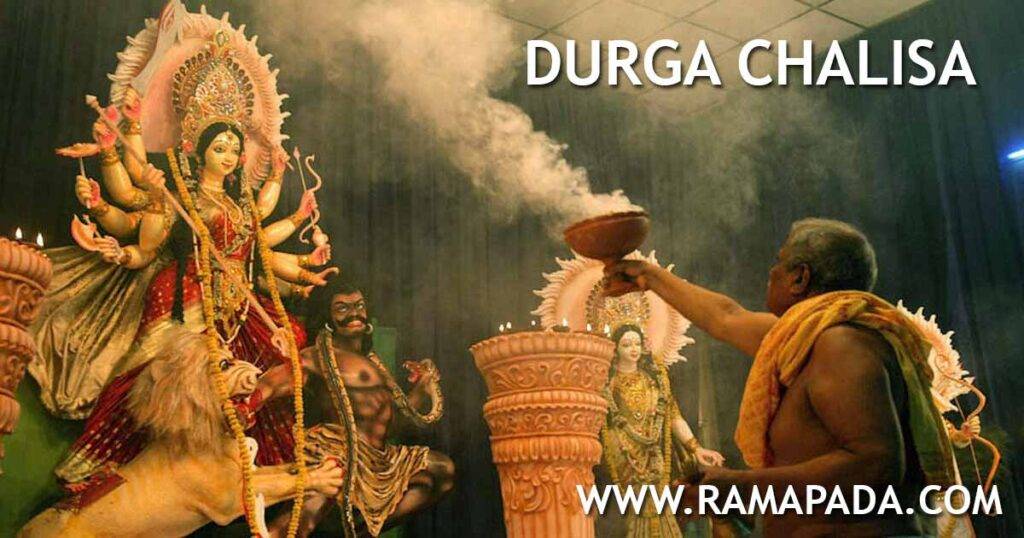Devotees revere the Durga Chalisa as a forty-verse devotional hymn that honours Goddess Durga, who embodies Shakti, the divine feminine energy. Rooted in the Bhakti tradition, it celebrates her many forms—from Annapurna to Kali—and invokes her blessings for protection, wisdom, and liberation.
Cultural and Spiritual Significance
- Forty Verses of Devotion: Each verse extols a unique aspect of Durga’s power, beauty, and benevolence.
- Symbol of Inner Strength: Reciting the Chalisa is believed to awaken courage, dispel fear, and remove obstacles.
- Navaratri Practice: Widely chanted during the nine nights of Navaratri, it deepens spiritual connection and invokes divine grace.
- Ethical Resonance: The hymn emphasises surrender, humility, and righteous living—values central to spiritual integrity.
Sanskrit Text of Durga Chalisa (Opening Verses)
Here are the first few verses in Sanskrit (Devanagari script):
श्री दुर्गा चालीसा
नमो नमो दुर्गे सुख करनी।
नमो नमो अम्बे दुःख हरनी ॥१॥
निरंकार है ज्योति तुम्हारी।
तिहूँ लोक फैली उजियारी ॥२॥
शशि ललाट मुख महाविशाला ।
नेत्र लाल भृकुटि विकराला ॥३॥
रूप मातु को अधिक सुहावे।
दरश करत जन अति सुख पावे ॥४॥
These verses praise Durga as the remover of sorrow and the source of cosmic light. Her form is described as radiant and awe-inspiring, evoking both reverence and joy.
You can find the full Sanskrit text on Vaidika Vignanam’s Durga Chalisa page.
Core Mantra from Durga Chalisa
One of the most powerful mantras embedded in the Chalisa is
॥ सर्वमङ्गलमाङ्गल्ये शिवे सर्वार्थसाधिके ॥ शरण्ये त्र्यम्बके गौरि नारायणि नमोऽस्तु ते ॥
Meaning:
“O Gauri, the auspicious one who fulfils all desires, the refuge of all, the three-eyed goddess—salutations to you, Narayani.” Devotees often recite this mantra independently to invoke Durga’s blessings during daily rituals and in times of distress.
Practical Use and Devotional Impact
- Daily Recitation: Enhances mental clarity and emotional resilience.
- Spiritual Protection: Shields the devotee from negative influences and inner turmoil.
- Cultural Continuity: Preserves the oral tradition of invoking divine feminine energy in poetic form.

